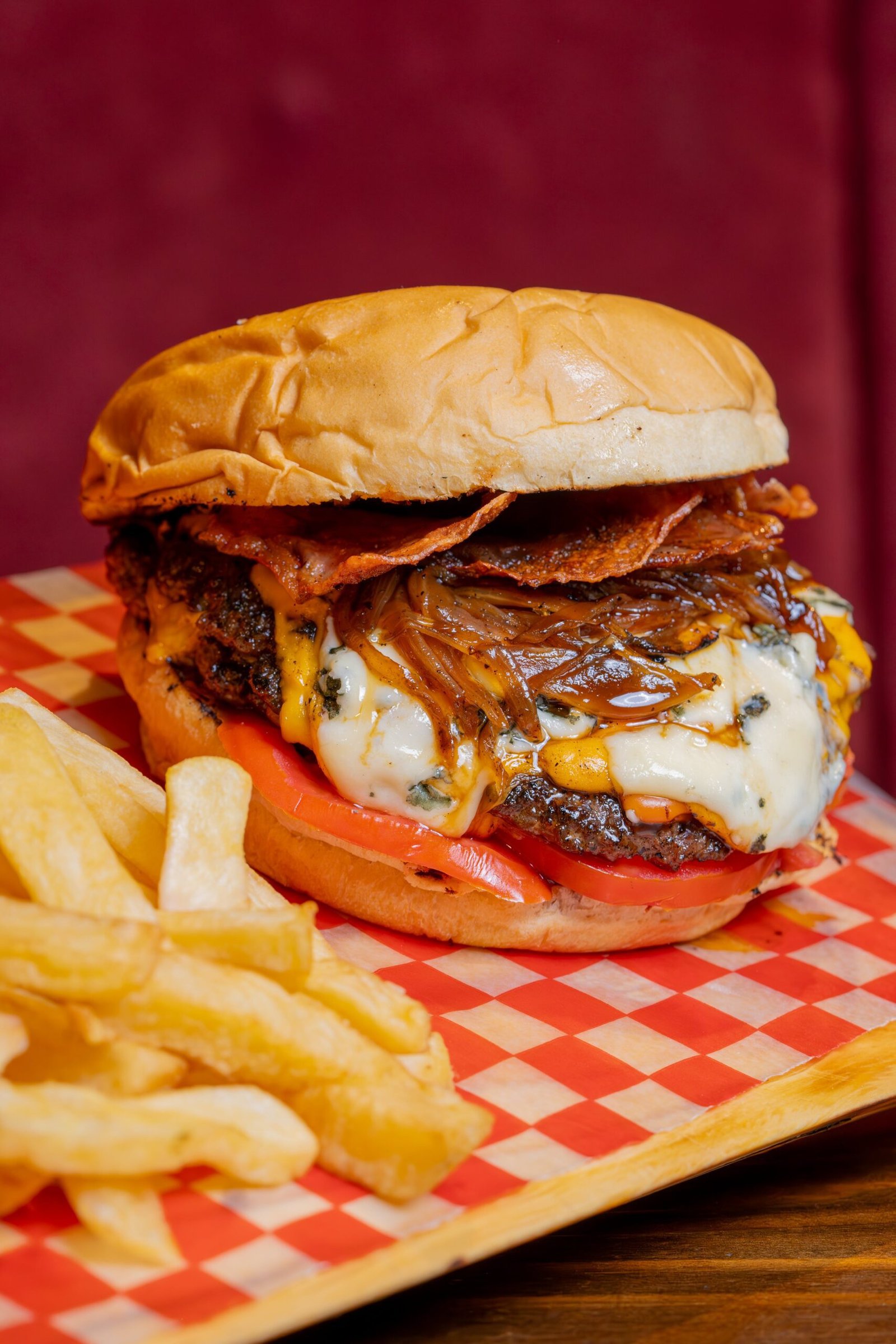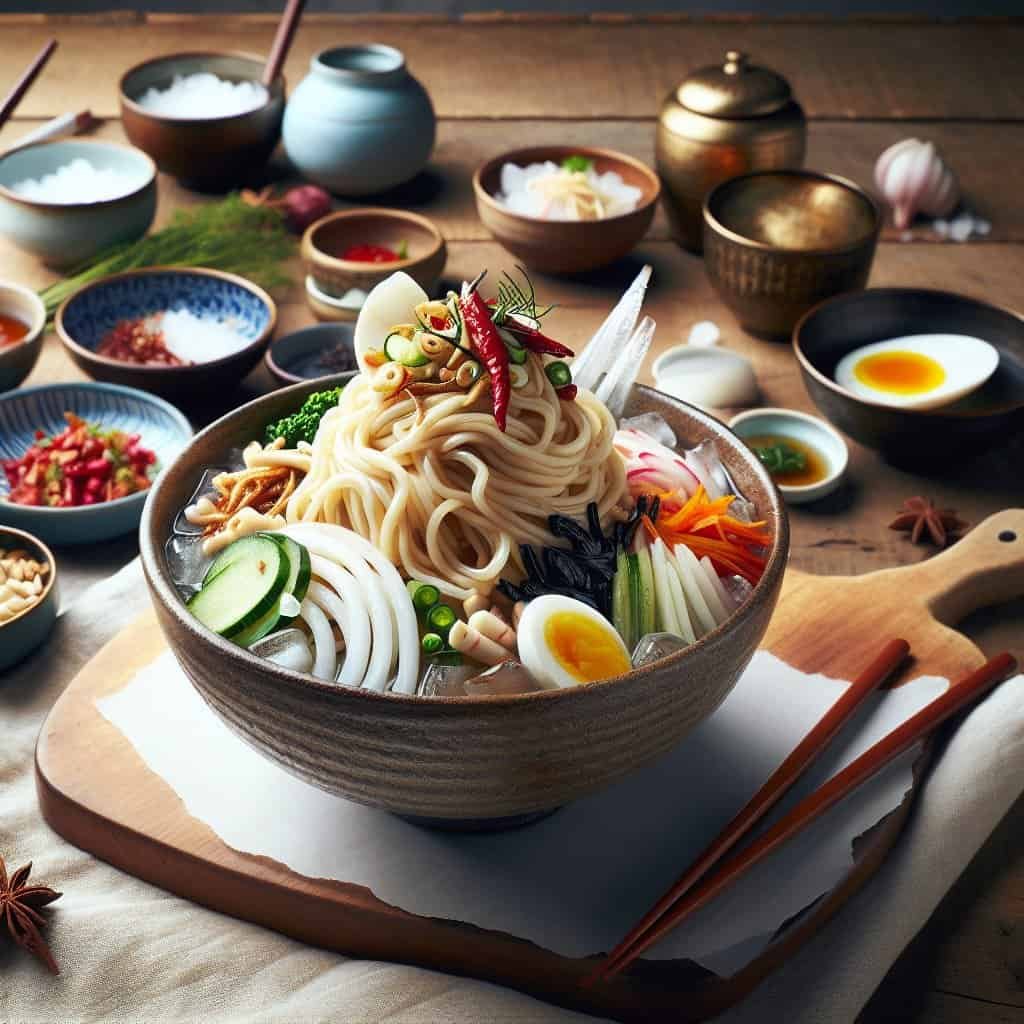Imagine sitting down to a refreshing meal on a hot summer day, with a bowl of traditional Korean cold noodles (naengmyeon) right in front of you. The anticipation builds as you wonder how to properly prepare and enjoy this delectable dish. From the perfect noodles cooked just right to the flavorful broth and array of toppings, learning the art of naengmyeon will elevate your culinary experiences and transport you straight to the heart of Korea. So grab your chopsticks and get ready to embark on a flavorful journey that will leave you craving more.

Choosing the Right Noodles
When it comes to traditional Korean cold noodles, or naengmyeon, choosing the right type of noodles is crucial. There are three main types of noodles that are commonly used in naengmyeon dishes: soba noodles, buckwheat noodles, and sweet potato noodles.
Soba Noodles
Soba noodles are a type of Japanese noodle made from buckwheat flour. While not traditionally used in naengmyeon, they can be a delicious alternative for those who prefer a lighter, more delicate taste. Soba noodles have a slightly nutty flavor and a smooth, slippery texture that pairs well with cold broths.
Buckwheat Noodles
Buckwheat noodles are the most common type of noodle used in naengmyeon. Made from a combination of buckwheat flour and wheat flour, these noodles have a slightly chewy texture and a distinctive nutty flavor. They are perfect for absorbing the flavors of the broth and the toppings, creating a harmonious and satisfying dish.
Sweet Potato Noodles
Sweet potato noodles, also known as glass noodles or dangmyeon, are made from sweet potato starch. These translucent noodles have a smooth, slippery texture and a neutral taste, allowing the other ingredients to shine. Sweet potato noodles are a great option for those who prefer a gluten-free or lighter alternative to traditional naengmyeon noodles.
Preparing the Noodles
Properly preparing the noodles is essential to ensure that they have the right texture and can absorb the flavors of the broth and toppings.
Boiling the Noodles
To cook the noodles, bring a pot of water to a boil and add the noodles. Follow the instructions on the package for cooking time, as it can vary depending on the type and brand of noodles you are using. Be careful not to overcook the noodles, as they can become mushy and lose their texture.
Draining and Cooling the Noodles
Once the noodles are cooked, drain them in a colander and rinse them with cold water to remove any excess starch. This step helps cool the noodles down quickly and stops them from further cooking. Cooling the noodles is crucial for serving them cold.
Seasoning the Noodles
After cooling, you can season the noodles with a little bit of sesame oil to prevent them from sticking together. Toss the noodles gently with your hands to distribute the sesame oil evenly. This step adds a subtle, nutty flavor to the noodles and enhances their texture.

Making the Broth
The broth is the heart of any naengmyeon dish, and there are several variations to choose from.
Beef Broth
Beef broth is the most traditional option for naengmyeon. The broth is made by simmering beef bones, brisket, and other cuts of beef with aromatic vegetables such as onions, garlic, and ginger. The result is a rich and flavorful broth that pairs perfectly with the noodles and toppings.
Chicken Broth
If you prefer a lighter and milder broth, chicken broth is a great alternative. To make chicken broth for naengmyeon, you can simmer chicken bones, wings, and vegetables such as onions, garlic, and carrots. The chicken broth adds a comforting and delicate flavor to the dish.
Vegetarian Broth
For those who follow a vegetarian or vegan diet, a vegetable broth can be a delicious substitute. Make the vegetable broth by simmering a variety of vegetables such as onions, garlic, mushrooms, and kelp. This broth provides a light and refreshing base for the noodles and toppings, while still retaining plenty of flavor.
Garnishes and Toppings
Garnishes and toppings are what make naengmyeon a truly delightful and satisfying dish. Here are some popular options to consider:
Cucumber
Sliced cucumber adds a refreshing crunch to the naengmyeon. You can either julienne the cucumber or slice it thinly, depending on your personal preference.
Asian Pear
Asian pear is a classic topping for naengmyeon. Thinly sliced and slightly sweet, it provides a contrast to the savory broth and adds a pleasant texture to the dish.
Radish
Radish is often pickled or thinly sliced and added as a topping to naengmyeon. It adds a crisp and slightly spicy kick, balancing the flavors of the dish.
Boiled Egg
A boiled egg is a common addition to naengmyeon, adding richness and protein to the dish. You can either slice the egg or serve it whole, depending on your preference.
Beef
Thinly sliced beef, such as brisket or bulgogi, can be added as a topping to naengmyeon. The beef adds a savory and meaty element to the dish, making it more substantial.

Adding the Noodles to the Broth
Once all the components of the dish are ready, it’s time to assemble and enjoy your naengmyeon. To serve, place a generous amount of noodles in a bowl and pour the chilled broth over them. Be sure to include a good portion of the toppings as well. Mixing the noodles, broth, and toppings together will create a harmonious blend of flavors and textures.
How to Eat Naengmyeon
Eating naengmyeon is a unique experience, especially for those who are not familiar with Korean cuisine. Here are some tips on how to properly enjoy your naengmyeon:
Using Chopsticks
Traditionally, naengmyeon is eaten with chopsticks. Use your chopsticks to twirl the noodles and scoop up the toppings and broth. If you are not confident with chopsticks, you can always use a fork instead.
Slurping the Noodles
In Korean culture, it is perfectly acceptable and even encouraged to slurp your noodles. Slurping helps to cool down the noodles and allows you to fully taste the flavors.
Mixing in the Sauce
Naengmyeon is often served with a spicy and tangy sauce on the side. You can mix the sauce into the noodles and broth according to your preference. The sauce adds an extra kick of flavor and spice to the dish.
Enjoying the Broth
Don’t forget to savor the broth as well. The broth is where the flavors of the dish come together, so be sure to drink it alongside the noodles. You can even enjoy it as a refreshing soup on its own.

Pairing with Side Dishes
To enhance your naengmyeon experience, consider pairing it with some traditional Korean side dishes, also known as banchan. Here are a few popular choices:
Kimchi
Kimchi is a staple in Korean cuisine and pairs well with naengmyeon. The spicy, fermented cabbage adds a tangy and pungent element to the dish.
Radish Kimchi
Radish kimchi, also known as kkakdugi, is a crunchy and slightly spicy side dish that complements the cold noodles perfectly.
Cucumber Kimchi
Cucumber kimchi, or oi kimchi, is a refreshing and cooling side dish that goes hand in hand with naengmyeon. Its crisp texture and tangy flavor balance out the richness of the noodles.
Pickled Radish
Pickled radish, or danmuji, is a popular side dish in Korea. Its sweet and tangy taste adds a burst of flavor to each bite of naengmyeon.
Spicy Tofu
For a protein-packed side dish, try spicy tofu. The soft and silky texture of the tofu, paired with its spicy marinade, complements the naengmyeon perfectly.
Variations of Naengmyeon
Naengmyeon comes in different regional variations in Korea, each with its unique characteristics. Here are a few popular variations to explore:
Pyongyang-style Naengmyeon
Pyongyang-style naengmyeon originated from the capital city of North Korea. It typically consists of buckwheat noodles served in a tangy and savory broth made from beef and pear.
Hamheung-style Naengmyeon
Hamheung-style naengmyeon is known for its chewy buckwheat noodles served in an icy broth. What sets it apart is the use of dongchimi, a refreshing radish water kimchi, which adds a unique flavor profile to the dish.
Bibim Naengmyeon
Bibim naengmyeon is a spicy variation of the cold noodles. The noodles are typically dressed with a spicy gochujang sauce, mixed with other ingredients such as cucumber, pear, and radish. It offers a fiery and flavorful alternative to the traditional naengmyeon.

Recommended Restaurants
If you’re looking to experience the authentic taste of naengmyeon, here are a few recommended restaurants to visit:
Seoul Naengmyeon
Located in the heart of Seoul, Seoul Naengmyeon is a renowned restaurant known for its delicious naengmyeon dishes. They offer a variety of options, including both traditional and modern interpretations of the dish.
Myeongdong Kyoja
Myeongdong Kyoja is a popular restaurant in the bustling Myeongdong district of Seoul. Alongside their famous kalguksu (handmade knife-cut noodles), they serve a delectable naengmyeon that is loved by locals and tourists alike.
Naemura restaurant
Naemura restaurant, located in Busan, is known for its authentic naengmyeon dishes. They take pride in using high-quality ingredients and traditional cooking techniques to create a memorable dining experience.
Health Benefits of Naengmyeon
Naengmyeon is not only a delicious and refreshing dish but also offers several health benefits. Here are a few reasons why naengmyeon is a great addition to your diet:
Refreshing and Hydrating
Naengmyeon is perfect for hot summer days as it helps to cool down your body temperature and keep you hydrated. The chilled noodles and savory broth replenish your energy and provide a refreshing sensation.
Low in Calories
Naengmyeon is a relatively low-calorie dish, making it a great choice for those watching their calorie intake. The noodles are typically made from whole grains and are lower in calories compared to other types of noodles.
Rich in Fiber
The buckwheat noodles used in naengmyeon are a good source of dietary fiber. Fiber promotes healthy digestion, aids in weight management, and helps to regulate blood sugar levels.
Rich in Vitamins and Minerals
Naengmyeon is packed with essential vitamins and minerals. The broth is often simmered with vegetables, such as onions and garlic, which provide vitamins C and B6. The noodles also contain important minerals such as magnesium and manganese.
In conclusion, naengmyeon is a delightful and versatile dish that offers a refreshing and delicious dining experience. From choosing the right noodles to selecting the perfect toppings and broth, each step in the process contributes to creating a satisfying meal. Whether you enjoy it at a renowned restaurant or make it at home, naengmyeon is a must-try dish that showcases the best of Korean cuisine.
